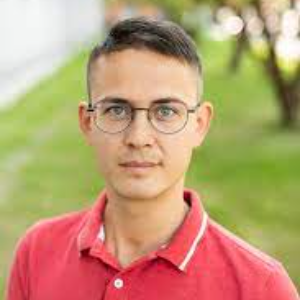Title : Design and development of novel apramycin antibiotics
Abstract:
Apramycin is an atypical 2-deoxystreptamine-type aminoglycoside antibiotic (AGA) isolated from Streptomyces ribosidificus. It is well known in veterinary and is used for treatment of many bacterial diseases. In our study it was chosen as a basis for the development of new antibiotics, because of its unique structure that evades the clinically widespread mechanisms of AGA resistance, that currently compromise the efficacy of other members in this drug class. As well, unlike other aminoglycosides, apramycin has reduced risks of ototoxicity and nephrotoxicity. There are already known examples of apramycin derivatives that contains apramycin as a scaffold and showed excellent target selectivity and exhibiting increased antibacterial activity for ESKAPE (Enterococcus faecium, Staphylococcus aureus, Klebsiella pneumoniae, Acinetobacter baumannii, Pseudomonas aeruginosa, and Enterobacter spp.) pathogens, as well LD50 values were significantly less than the parent in the ex vivo mouse cochlear explant model. Therefore, successful use of apramycin in the development and design of novel apramycin analogs (apralogs) would result in new potential antibiotics with excellent antibiotic activity against multidrug resistant pathogens. In our quest to improve the antibacterial activity of apramycin, we based on the idea of developing apramycin’s hybrids by installation of a substituted additional furanosyl ring into the 5-position of apramycin, in such a manner as to append substituents at the furanosyl ring 3-position so as to mimic of paromomycin scaffold. These novel derivatives carry activity-enhancing aminoalkyl substituents at the ribose 3-position via a carbon-carbon or nitrogen-carbon bonds. This modifications allow the retention of a hydroxy or amino group at the ribose 3-position with the potential to engage in adventitious hydrogen bonding interactions in the hydrated binding site and the consequent potential to further increase activity and selectivity. Herein we report the design and synthesis of novel apralogs, both anomers of 5-O-(5-amino-3-C-dimethylaminopropyl-D- ribofuranosyl)apramycin, 5-O-[3-C-dimethylaminopropyl)-β-D-erythrofuranosyl), 5-O-(5-amino-5-deoxy-3-amino-3-deoxy-D-ribofuranosyl) and 5-O-(5-amino-5-deoxy-3-N-dimethylaminopropyl-3-deoxy-D-ribofuranosyl)apramycins.
Audience Take Away:
- The audience will know how to properly design synthetic schemes of novel apralogs, how to improve the antibacterial activity of apramycin and to form the glycosidic bond at the 5-position of apramycin
- It will provide a practical solution to solve problems with glycosidic bond formation in the presence of basic amino substituent, installation of substituents in the different positions of the ribose (furanosyl ring)
- It will help to improve the accuracy of a synthetic scheme design and practical choice of protection groups




